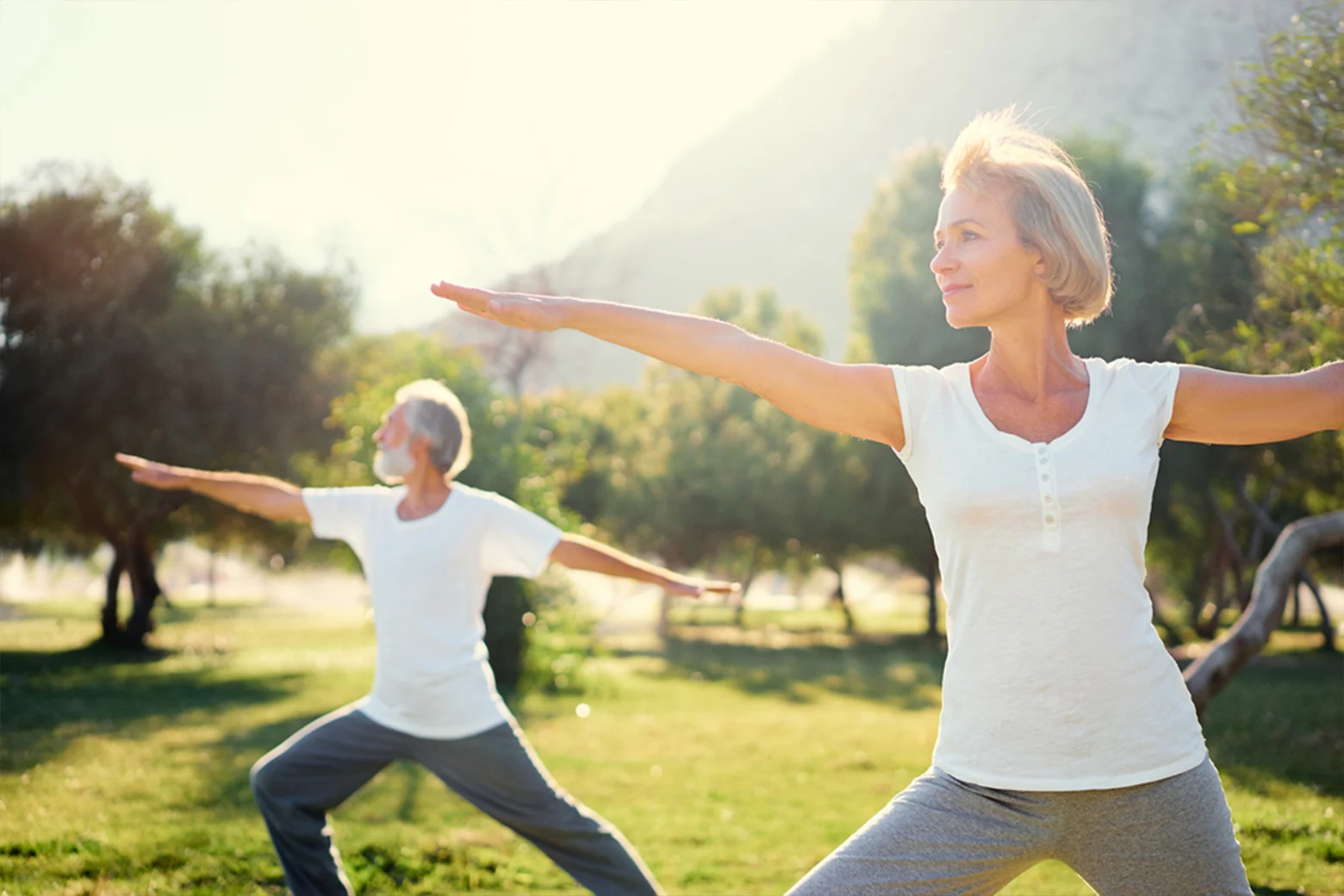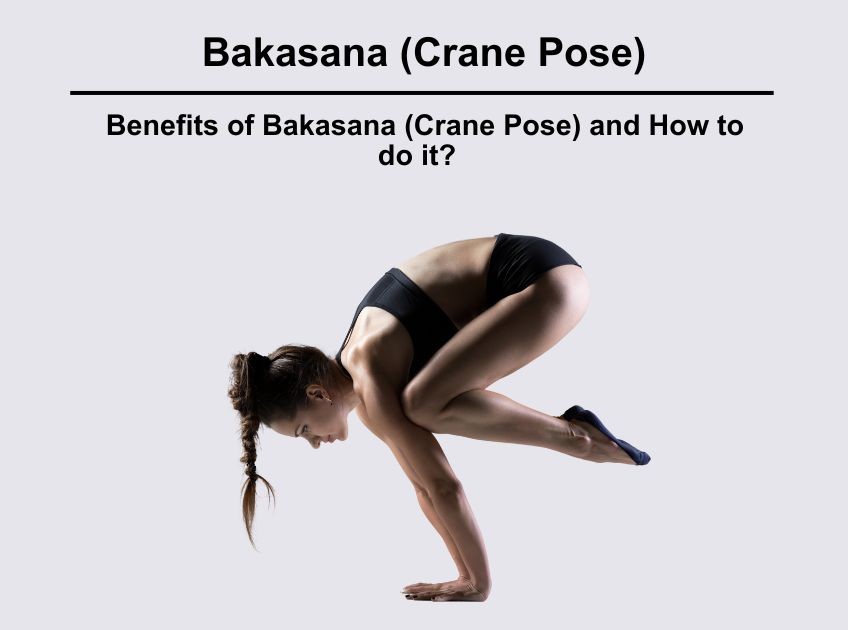
Bakasana, also known as Crane Pose is a part of hatha yoga asana in the terminology of yoga asanas. It is an intermediate-level yoga pose that requires lots of arm strength and body balance.
Despite its overwhelming benefits for the whole body this empowering pose like arm balancing, mind-body connection building yoga, or core strength, should be practiced by those who are well-trained with beginner yoga asana and whose body is quite flexible to make such appropriate curves.
The Crane Pose, often referred to as the crow and crane pose. As it is a physical manifestation of arm balancing mastery, it requires strength and stability in the arms, wrists, and core muscles to achieve the crane or crow position in yoga. By practicing Bakasana, you can unlock your potential for both physical and mental strength.
In this article, we'll call the Crane pose or Crow pose as Bakasana. We will learn deeply about the bakasana benefits, steps to follow for bakasana, its variations to challenge yourself, precautions to consider, and follow-up poses to enhance your practice.
_1707291015.png)
Bakasana, also known as Crane Pose. It is an Intermediate level yoga asana that resembles the posture of a crane. In this pose, the hands are on the floor while the knees hang in the air pointing the shoulder and the whole body weight is carried by just two palms. It requires strength in the arms and wrists, to lift the feet off the ground and carry the weight of the whole body by just two palms.
The Bakasana is crane pose that mimics crow asana. There is a small difference between crow pose and crane pose i.e., in crane pose the shoulders, elbows and wrist are in a straight line while in crow pose the elbows are bent. People in general call crow and crane pose together as crane pose is mastered after crow pose.
Bakasana is derived from its sanskrit term, where baka is saras or crane while asana is known as yoga pose. It targets the arms, wrists, hips, shoulders, chest, and abdominal muscles.
People make mistake between the Crow pose and the crane pose. Most students think both are the same poses but the crane pose is practiced after mastering the crow pose. In the crow pose the knees get the support of the arms but in the crow pose the whole body weight is just carried by two palms and the knees above the ground do not get the support of the arms. Also, in the crow pose the elbows are bent while in the crane pose the shoulders, elbows, and wrist are in a straight line without any bent in the hand except the wrist where the palm has to rest on the ground.
Bakasana or Crane Pose, offers a wide range of physical and mental health benefits. By practicing Bakasana regularly, individuals can experience improvements in various aspects of their health.
Arm Strength: Bakasana is an arm balancing pose that strengthens the arms, shoulders, and wrists, enhancing upper body strength and stability.
Core Strength: The pose engages the core muscles, including the abdominal muscles, leading to improved core strength and stability.
Flexibility: Bakasana requires flexibility in the legs and hips to achieve the proper position. Regular practice can increase flexibility in these areas.
Balance and Coordination: Balancing on the arms in Bakasana improves balance and coordination, as well as body awareness and proprioception.
Abdominal Muscles: The pose activates the abdominal muscles, helping to tone and strengthen the core.
Blood Circulation: Bakasana stimulates blood circulation throughout the body, promoting oxygen and nutrient delivery to the muscles and organs.
Depression Relief: Bakasana can help relieve symptoms of depression and anxiety by promoting the release of endorphins and boosting mood.
Increased Confidence: Mastering Bakasana can boost self-confidence as individuals feel a sense of accomplishment and progress in their yoga practice.
Focus and Awareness: The concentration required to maintain balance in Bakasana cultivates mindfulness, focus, and a deeper mind-body connection.
It is essential to approach Bakasana with caution and seek proper guidance from a trained yoga instructor, especially if you have any pre-existing conditions or injuries. With consistent practice and proper alignment, Bakasana can be a valuable addition to your yoga practice.
Also Raed: Health Benefits of Anjaneyasana (Low Lunge Pose) Benefits And Steps
To practice Bakasana, follow these steps:
Squat on the floor with your feet hip-width apart.
Place your hands flat on the ground in front of your feet, fingers spread wide for stability.
Bend your elbows slightly and press your palms firmly into the ground to engage your arms.
Shift your weight forward and engage your core abdominal muscles.
Gradually lift your feet off the ground, bringing your knees to touch the upper arms near the armpits.
Now unbend your elbow and let whole body weight carried by palms.
Maintain steady breathing and focus your gaze on a point to help maintain balance.
Hold the pose for a few seconds or longer, depending on your comfort level and strength.
To release the pose, slowly lower your feet back to the ground and return to the squatting position.
Remember to maintain stability throughout the pose and practice under the guidance of a trained yoga instructor to ensure proper alignment and technique.
Bakasana, or Crane Pose, offers a range of variations that provide different challenges and benefits. One popular variation is Parsva Bakasana, also known as the side crane pose. This intermediate level yoga pose involves twisting and balancing on the arms, with both arms in front and the legs extended to one side. Parsva Bakasana requires strength, stability, and balance, offering a deeper challenge for individuals who have mastered the basic form of Bakasana.
While practicing Bakasana, it is important to consider certain precautions and contraindications to ensure a safe and effective practice.
Individuals with high blood pressure or heart diseases should avoid Bakasana. The pose involves a significant amount of physical effort and can increase blood pressure levels. It is essential to prioritize the well-being of the heart and consult with a qualified healthcare professional before attempting this pose.
If you have thrombosis or any blood clotting disorders, it is advisable to stay away from performing Bakasana. The pose exerts pressure on the blood vessels and can potentially worsen the condition.
Individuals with wrist or knee pain should approach Bakasana with caution or better to avoid it. The pose requires a stable base and places strain on the wrists and knees.
Pregnant individuals should avoid Bakasana, especially as the pregnancy progresses. The pose involves balance, core engagement, and pressure on the abdomen, which may not be suitable during pregnancy. It is essential to prioritize the safety and comfort of both the mother and the baby.
Similarly, menstruating individuals should be cautious with Bakasana. The pose can create additional strain on the pelvic area and may disrupt the natural flow of energy during menstruation. It is advisable to practice gentler yoga poses during this time to honor the body's needs and promote well-being.
In case of any doubt consult trained yoga expert.
On June 14, 2019, Kaushalya Devi from Himachal Pradesh achieved the world record for the longest performance of Bakasana. With incredible strength and perseverance, she held the pose for an astounding four minutes and twenty-five seconds. This remarkable feat not only highlights Kaushalya Devi's dedication and skill but also showcases the physical and mental challenges that come with practicing Bakasana.
Her achievement serves as an inspiration for yogis and fitness enthusiasts worldwide, encouraging them to push their limits and strive for greatness in their yoga practice. Kaushalya Devi's world record in Bakasana demonstrates the transformative power of yoga as a means to build strength, balance, and endurance. It motivates individuals to embark on their journey toward mastering this challenging arm balancing pose.
Before attempting Bakasana, practicing preparatory poses can help warm up the body, increase awareness, and prepare the muscles and joints for the arm balancing pose. One such preparatory pose is Padmasana, also known as the cross-legged sitting pose.
Padmasana helps to open up the hips and improve flexibility in the legs and ankles, which are important for maintaining stability and balance in Bakasana. By sitting cross-legged and focusing on maintaining an upright posture, you can engage the muscles needed for Bakasana and ensure proper alignment. Padmasana pose promotes a sense of calmness and focus, making it an ideal preparatory pose for Bakasana.
Practicing Padmasana regularly, along with other preparatory poses, can help you build the necessary strength, flexibility, and mind-body connection for a successful Bakasana practice.
After practicing Bakasana, it is beneficial to include follow-up poses that complement and enhance the benefits of this challenging arm balancing pose. Two recommended poses to include in your sequence are Balasana (Child Pose) and Ustrasana (Camel Pose).
Child Pose, also known as Balasana, provides a moment of rest and relaxation for the body after the intensity of Bakasana. To practice Balasana, begin by kneeling on the floor with your knees hip-width apart. Gently fold forward, allowing your torso to rest on your thighs. Extend your arms forward or rest them alongside your body, whichever feels more comfortable. Take slow, deep breaths and allow your body to surrender to the pose, releasing tension and promoting a sense of calm.
Camel Pose, or Ustrasana, is an excellent pose to follow Bakasana as it helps to open up and stretch the spine, hips, and chest. To practice Ustrasana, start by kneeling on the floor with your knees hip-width apart. Place your hands on your lower back for support and gently arch your back, leading with your chest. Drop your head back if it feels comfortable and extend your hands towards your heels. Maintain a steady breath and hold the pose for several breaths before releasing back to a kneeling position.
By incorporating Balasana and Ustrasana into your yoga practice after Bakasana, you can further enhance your flexibility, strength, and overall well-being. These poses provide balance and a gentle counterpose to the intensity of Bakasana, allowing you to experience a well-rounded yoga sequence.
To practice Bakasana effectively and safely, it is important to focus on building core strength, developing hand-to-body coordination, and making gradual progress. Engaging the core muscles will provide the necessary stability and support for maintaining balance in Bakasana.
Here are some essential tips to enhance your Bakasana practice:
Build Core Strength: Strengthening your core muscles is crucial for maintaining a stable and balanced Bakasana posture. Incorporate exercises that target your abs, obliques, and lower back into your fitness routine to build a strong foundation.
Develop Hand-to-Body Coordination: Practice exercises that improve your hand-to-body coordination, such as forearm plank holds, wrist conditioning exercises, and arm balances like Crow Pose. These exercises will enhance your ability to distribute weight evenly and maintain control during Bakasana.
Make Gradual Progress: Bakasana may require time and patience to master. Start by practicing preparatory poses, like Crow Pose, to build the necessary arm and core strength. Gradually progress to Bakasana, ensuring proper form and alignment at each stage. Listen to your body and avoid forcing yourself into the pose before you are ready.
Seek Professional Guidance: It is highly recommended to receive professional guidance from a trained and experienced yoga instructor. They can provide personalized modifications, alignment cues, and help you avoid common mistakes. A yoga instructor will ensure your safety and maximize the benefits of your Bakasana practice.
Also Read: Ashtanga Namaskara - 8 Benefits of Ashtanga Namaskara (Eight Limbed Pose)
In conclusion, Bakasana, also known as Crane Pose, is a challenging yet highly beneficial yoga pose that strengthens the arms, wrists, and core muscles. This is a true yoga asana that test body's balancing potential along with the arm's strength. It promotes mental well-being by fostering mindfulness and concentration. This crane position yoga needs daily practice with proper alignment for transformative results.
If you're new to yoga and want to start practicing yoga in an organised way to learning the correct techniques for yoga asanas, our Yoga for Beginners course is the ideal choice for you.
Explore our 100-hour Yoga Teacher Training course, offered by one of the best training facilities in Rishikesh, perfect for those interested in deepening their practice and teaching skills.
Explore the world of healing and meditation through our exceptional Sound Healing course in Rishikesh.Designed for people who are passionate about learning and engaging with these activities that change lives
All the best for your advanced yoga journey. Hoping you good health!

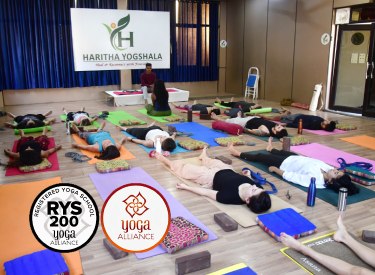
Haritha offers 100, 200, 300 hours yoga teacher training in Rishikesh
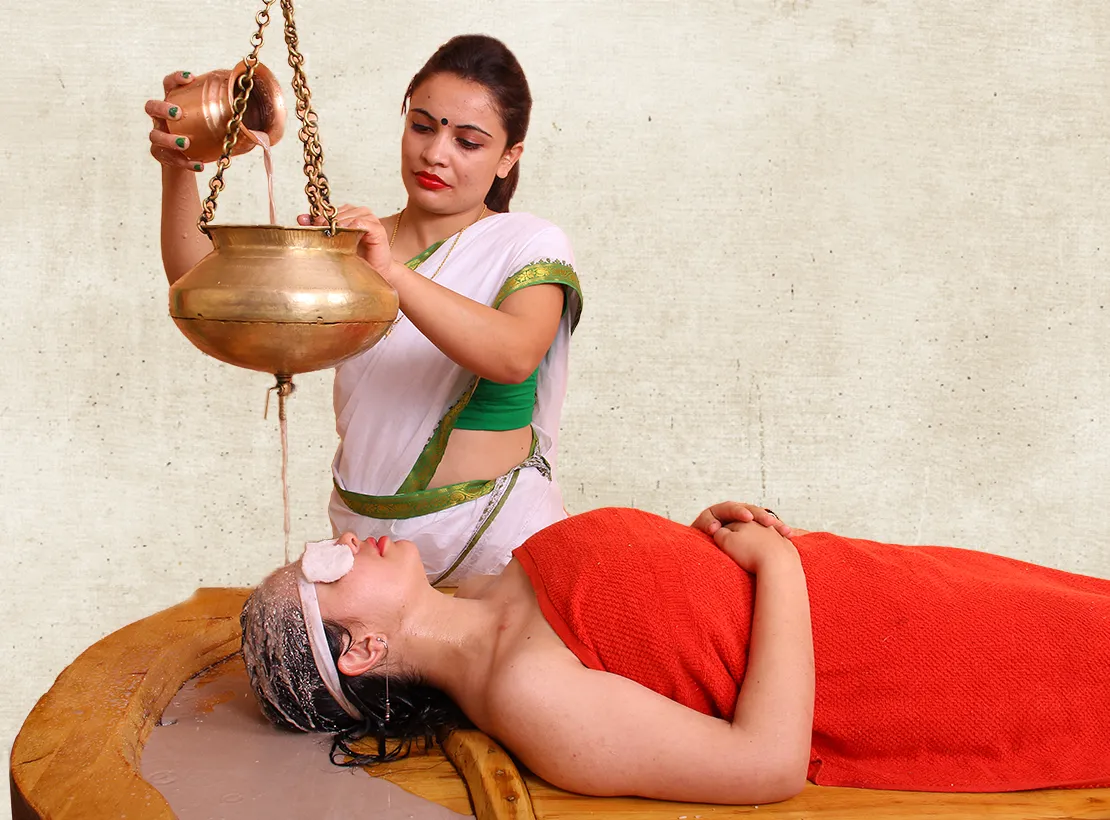
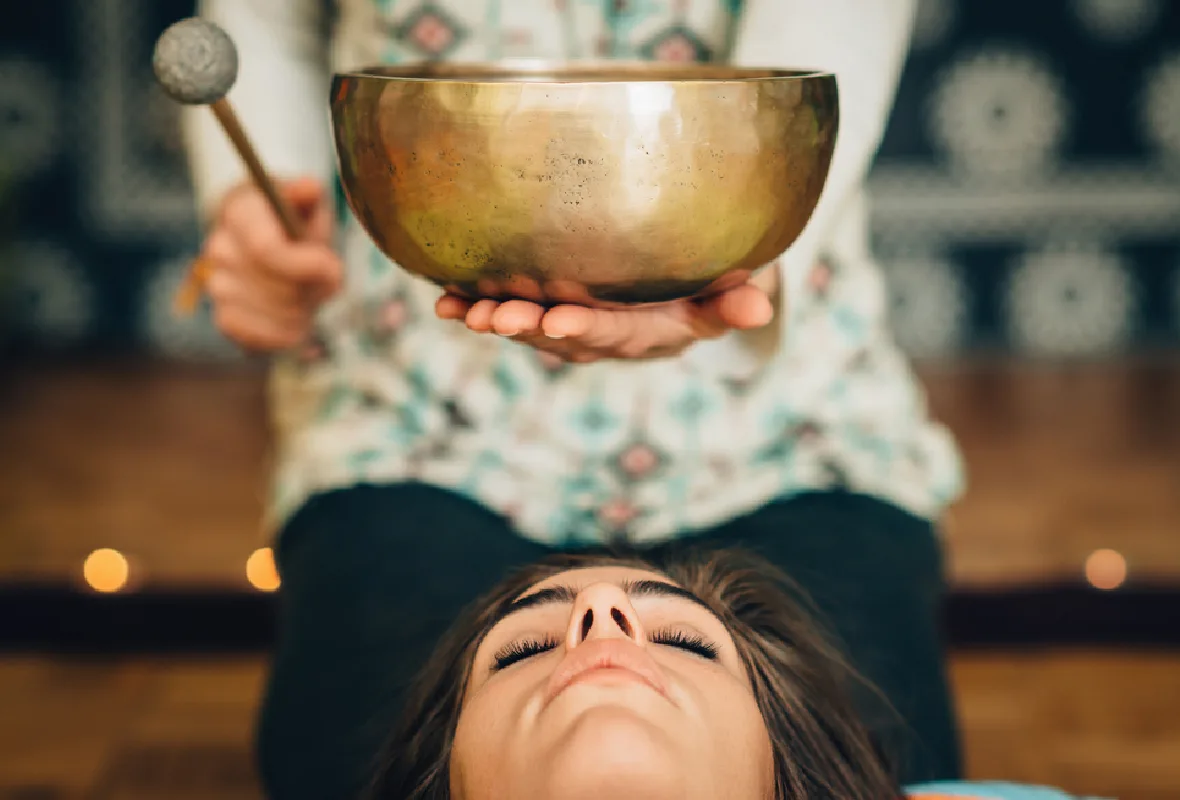
Know about Haritha healing and meditation courses and therapies
